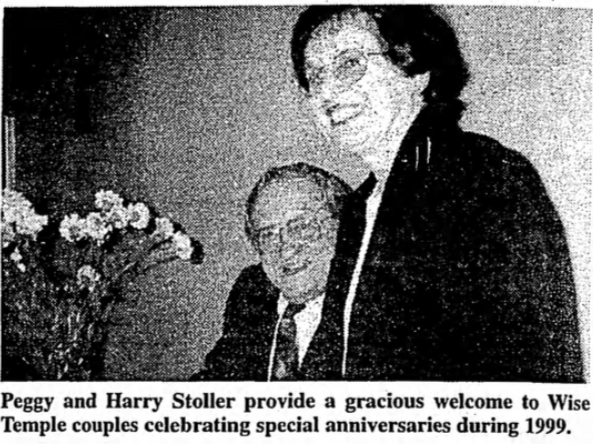The other day I was reading Lucretius (which we should all get in the habit of doing from time to time) and perused a very affecting passage of the plaintive actions of a distraught cow when she could not find her calf (which had in the meantime been made a sacrifice of). It brought to mind the degree to which cows feature in Eastern European Jewish life. Mendele Moykher Sforim’s story “The Calf” is sufficient to give a sense of this intimacy.
Given that intimacy, it should be no surprise that cows feature in a variety of idiomatic ways in Yiddish. The word for cow is “ku”; the plural is “ki”; and the diminutive is “kíele.” The latter is both an endearment and another word for calf. It is also, for those who remember an earlier column, a synonym for a ladybug. This is a truncation of the full term “Móyshe rabéynu’s kíele” (literally, the little cow of Moses our teacher). The full measure of intimacy is indicated by the variety of idioms. First there’s “blínde ku” (literally, blind cow) which is one of the Yiddish names for the tag game of blind man’s buff (alternately known as blind man’s bluff). “Es past vi a ku a zotl” literally means “as fitting as a saddle on a cow,” in other words, not fitting at all. Or take “nókhgeyn vi a ku a kalb” — literally, to follow like a calf following a cow — which is the Yiddish version of following like a puppy dog. Calves especially are noted for their eyes, and so we find in Yiddish: “oygn vi bay a kalb” (calf’s eyes) is the same as “doe-eyed.” And then there’s “béser éyn ku in shtal éyder tsen in feld” (literally, better a cow in the shed than ten in the field) which is the equivalent of “a bird in the hand is worth two in the bush.”
These idioms are fairly mundane, but others are rather more fanciful. Take this one: “shlepn di ku afn bóydem” (to drag the cow up into the attic), which means to do something the hard way. Or this one: “a ku iz geflóygn íbern dakh” (a cow flew over the roof), which is used to refer to something utterly bonkers. Of course, one’s mind instantly goes to “Hey Diddle Diddle” (and its echo, for anyone who has ever raised children, in Goodnight Moon) with its cow jumping over the moon. The point is the absurdity of the image. But Yiddish sometimes likes to embroider, so the phrase can sometimes be found: “a ku iz geflóygn íbern dakh un geléygt an ey”—a cow flew over the roof and laid an egg. Or sometimes: “a ku iz geflóygn íbern dakh un dem ek farlóyrn” — a cow flew over the roof and lost its tail. Or sometimes even, in slightly less decorous situations: “a ku iz geflóygn íbern dakh un dem shvants farlóyrn” — a cow flew over the roof and lost its prick. Each of these doubles up on the absurdity: of the cow’s ability (that is, inability) to fly, or to lay eggs, or to have a membrum.
The most common association with cows, however, is their stupidity. “Behéyme” (from the Hebrew stratum of the language) can refer to a cow, but can just as easily refer to a stupid person or a lummox. While an “oks” is a bull or an ox, it is also a stupid person. (It is interesting that other words for bull — “bik,” “bayk,” “buháy” — are less commonly used in this latter sense.) The famed “pore-adúme” refers to the red heifer of Biblical fame (Numbers 19), and it is in the sense of its redness that it can be used in Yiddish. But it can also be used to refer to a simpleton.
A less common word, “rind,” is used in reference to a head of cattle, and its plural — “rinder” — can be rather poetically rendered “kyne.” It also appears, one suspects on the basis of the fortuitous rhyme, in the expression: “keyn kind, keyn rind” (literally, neither child nor cow) with the sense of being completely alone in the world.
Another word for cattle or livestock is “fikh,” which is cognate with the German “Vieh,” with the same meaning. Interestingly, English does indeed have a cognate word, “fee.” This word originally had the same livestock meaning as well. It came to be used for movable property (of which cattle was a conspicuous kind) and to money, whence its current more specialized usage.
An important point to make is the closeness of Jews to cattle, whether it was in commerce or in the business of daily life. How else can we account for the maintenance of such specialized vocabulary as the following (all taken from the Slavic component of the language): “télitse” (heifer); “yálevke” (barren cow); “pérveske” (a cow that is calving for the first time).
I will leave you with an important bit of wisdom. Very much like my father used to say to me, that hot glass looks exactly like cold glass, one can also admonish: “bay nakht zénen ále ki shvarts” — at night, all cows are black.
And on that note, as always, “léyent gezúnterhéyt” — read it in good health.
Please send Yiddish questions to: yiddishcolumn@americanisraelite.com




